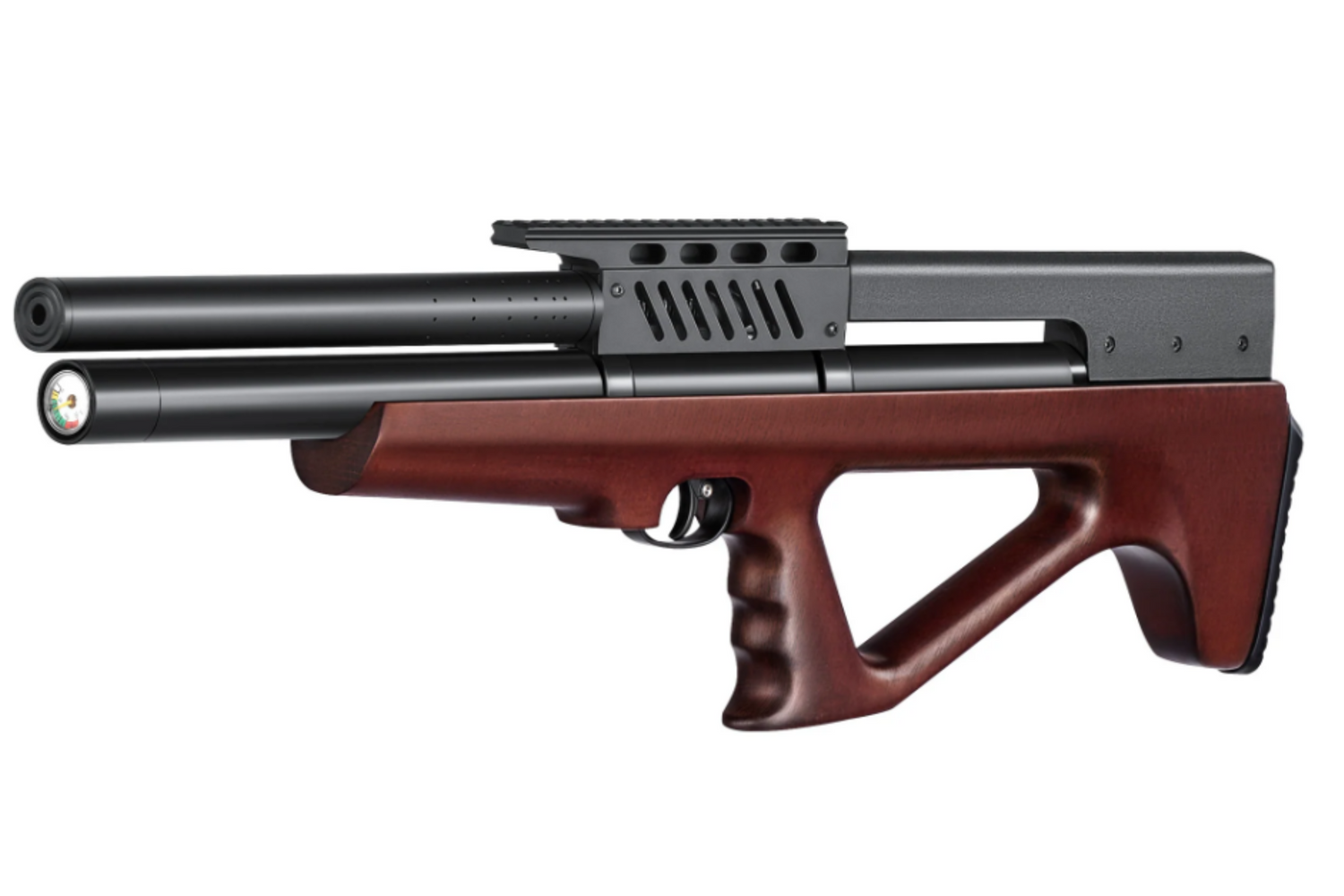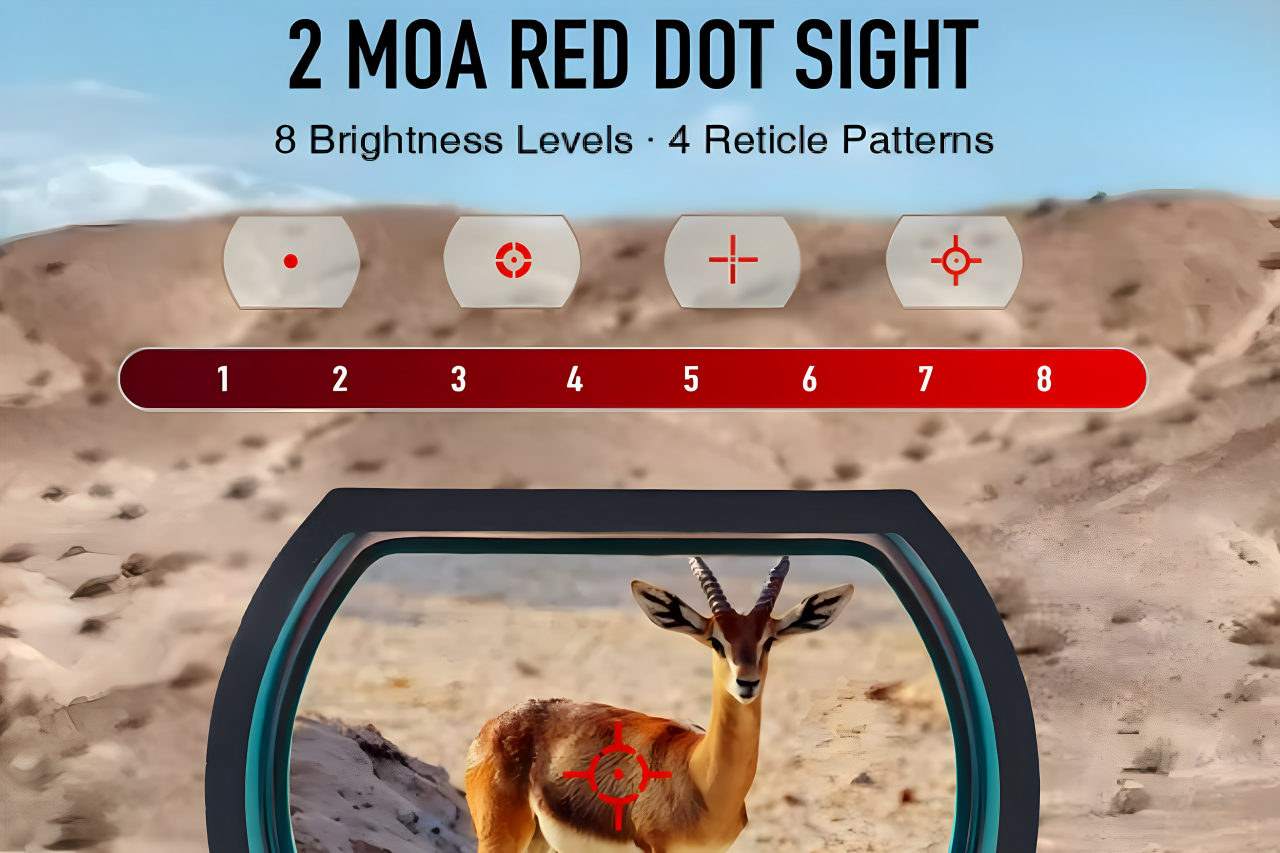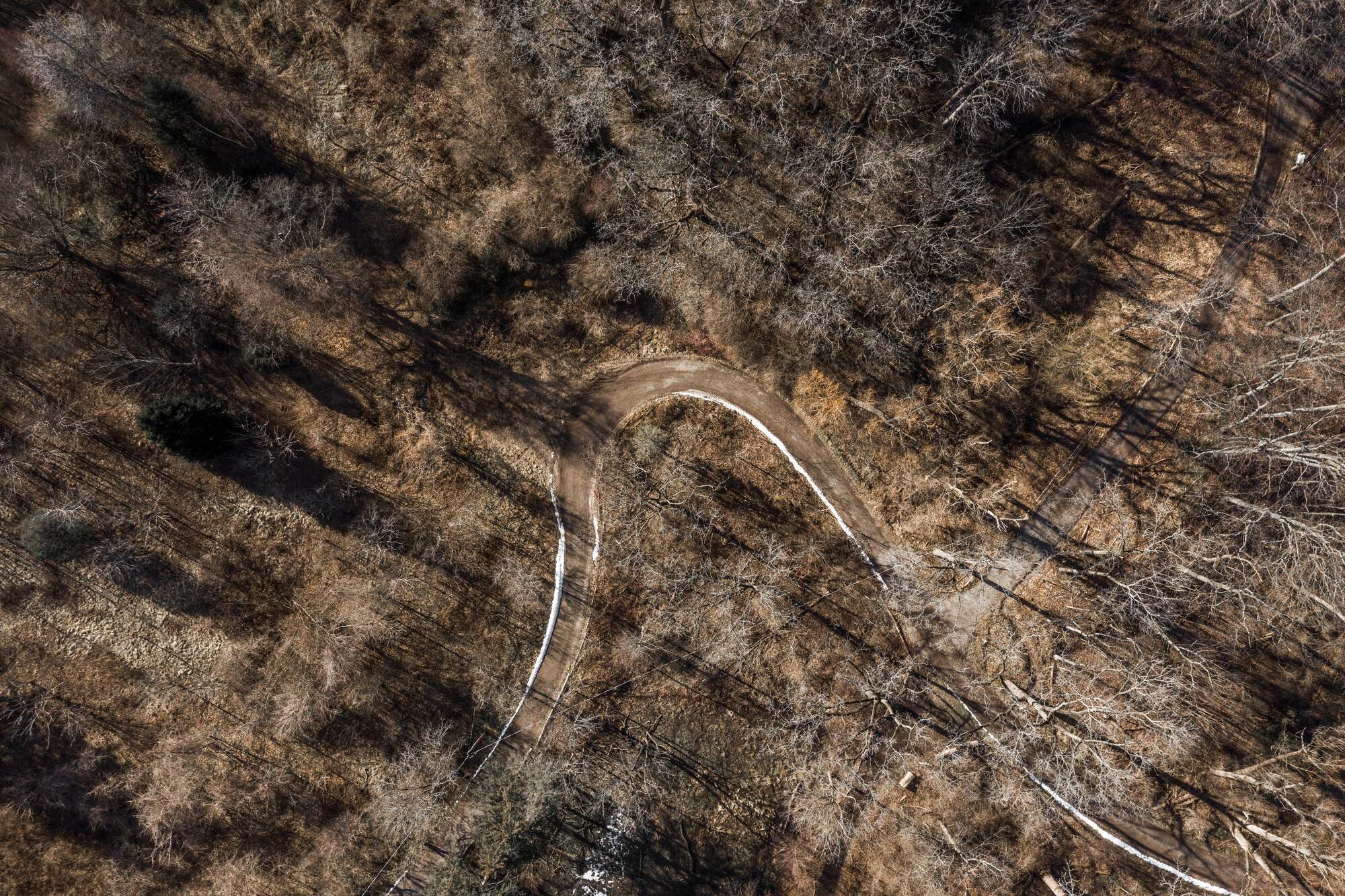If you are exploring an alternative to traditional firearms, an air rifle is precisely the way to go.
In terms of flexibility, accuracy, and performance, an air rifle (especially a PCP Air rifle) is a pretty decent alternative to a traditional rifle. Plus, air rifles are quieter and present a much more budget-friendly shooting experience.
However, there are some marked differences in design, purpose between an air rifle and a regular firearm, and these are worth considering before you make the switch.
Also, there are many different types of air rifles to choose from.
This guide will take you through all the basics about air rifles: what they are, how they function, the different types available, and which models are best suited for hunting everything from squirrels to deer.
What Is an Air Rifle?
Here is a simple way to define an air rifle: it is a type of gun that uses compressed air or gas to fire a pellet or BB. Instead of igniting gunpowder like traditional firearms do, air rifles store and release pressurized air or gas behind the pellet.
When you pull the trigger, a valve or piston allows this stored energy to rapidly expand, and that is what propels the projectile down the barrel.
The fact that air rifles rely on mechanical pressure rather than explosive gunpowder means that they offer certain advantages, especially to beginners and hunters.
Advantages of Air Rifles
- They are much quieter to use, which is obviously important if you are stalking prey or shooting in a suburban area.
- The recoil is lower, which is great for beginners or those with shoulder concerns
- The cost per shot is lower (since you are using BBs or pellets)
- They are highly accurate, especially at short to medium distances (you are not sacrificing your accuracy)
Take note that the word “air rifle” is an umbrella word that encompasses rifles that rely on compressed air instead of gunpowder.
There are different kinds of air rifles, and in most cases, the performance you get depends on what kind of air rifle you use.
Types of Air Rifles
The four main and most popular types of air rifles are Spring-Piston Air Rifles, Gas Piston Air Rifles, Pre-Charged Pneumatic (PCP) Air Rifles, and CO₂ Air Rifles.
Each of these air rifles has its own pros, cons, and ideal use cases.
1. Spring-Piston Air Rifles
Spring-piston air rifles use a coiled spring and piston system. When you cock the rifle (usually by breaking the barrel or pulling a side lever), you compress the spring.
Pulling the trigger releases it, driving a piston forward and forcing air behind the pellet.
Spring-piston air rifles are great because they are self-contained: you don’t need an external tank or any extra cartridges.
If you are into target shooting, plinking, or small pest control, these should be top of your list.
Spring Piston Air Rifles: Pros and Cons
| Pros | Cons |
| No external tanks or cartridges needed | More recoil than expected |
| Affordable | Requires a consistent shooting technique for best accuracy |
| Long-lasting with minimal maintenance |
2. Gas-Piston (Nitro Piston) Air Rifles
Gas-Piston Air rifles are similar to spring-piston models but use a sealed gas cylinder instead of a spring, which makes for a smoother and quieter shooting experience with comparatively less recoil and less vibration.
Consider a Gas-Piston air rifle if you are into all-around shooting or casual hunting.
Gas-Piston Air Rifles: Pros and Cons
| Pros | Cons |
| Performs well in cold weather | Slightly more expensive than spring-piston rifles |
| Better longevity than steel springs | Still requires cocking between shots |
3. Pre-Charged Pneumatic (PCP) Air Rifles
If you are looking for accuracy and performance from an air rifle, consider a Pre-charged Pneumatic (PCP Air Rifle).
PCP rifles store high-pressure air in a reservoir, which can be filled using a hand pump, scuba tank, or electric compressor. When you pull the trigger, a valve opens and releases just enough air to fire the pellet.
At present, PCP air rifles are the most powerful and accurate air rifles on the market.
You get extremely accurate shooting with virtually no recoil, you can take multiple shots per fill, and they can be tuned or regulated for precise power output.
Consider a PCP if you are a serious hunter or competitive shooter.
This .22 Cal Single Shot PCP Air Rifle is the perfect partner for precision shooting. You can fire 5.5 mm .22 caliber pellets at speeds of up to 850 fps, and with a 350 cc air reservoir, filled to 3600 psi, you get up to 120 shots per fill.
It comes with a Picatinny rail, which makes it easy to mount your scope for enhanced vision.
4. CO₂ Air Rifles
These rifles use small CO₂ cartridges (typically 12g or 88g) to provide power. They’re user-friendly, quiet, and great for plinking or indoor use.
They also offer a low-noise shooting experience with little recoil, and there are semi-automatic options available as well.
However, these have limited power and are not ideal for serious hunting
What Air Rifle Do You Need?
When planning to purchase an air rifle, especially if it is your first, make sure to choose the right caliber and energy for your intended target. Also factor in the cost of accessories like optics, pumps, pellets, etc.
Here are some guidelines for purchasing an air rifle:
- Pellet quality: Heavier, domed pellets or slugs are best for hunting.
- Scope quality: A cheap scope can limit your accuracy.
- Noise level: Springers are louder; PCPs with shrouded barrels are the quietest.
- Ease of use: Springers require strength to cock; PCPs need filling equipment.
How Good Are Air Rifles for Hunting?
Hunting with an air rifle is growing in popularity, but not all airguns are built for the job. The key to choosing an air rifle for hunting is to match your rifle’s power, caliber, and accuracy to the size and toughness of your target animal.
Hunting Small Game with an Air Rifle
For hunting small game like squirrels, rabbits, and birds, you can go for either a gas-piston or a PCP air rifle. Here are the ideal specs to look for:
- Caliber: .22 (or .177 for headshots)
- Energy: 12–20 ft-lbs
- Type: Spring, gas-piston, or PCP
This 10-Pellet PCP Air Rifle is the perfect partner for precision shooting and small game hunting. You can fire 5.5 mm .22 caliber pellets at speeds of up to 800 fps.
- The 225 cc air reservoir, filled to 3600 psi, provides up to 80 shots per fill.
- Plus, the 10-pellet magazine means fewer reloads and more time focused on your target.
It features a 130 mm long and 11 mm wide dovetail rail for easy attachment of scopes or lights. This air rifle is fully customizable to suit your shooting style.
Hunting Medium Game with an Air Rifle
Raccoons, groundhogs, possums, etc., all constitute medium game, and for these, you need a PCP air rifle. Here are the key specs to look for.
- Caliber: .25
- Energy: 40–70 ft-lbs
- Type: PCP
You’ll want heavier pellets or slugs and focus on heart/lung shots for clean kills.
Large Game (Deer, Wild Boar)
Technically speaking, air rifles can ethically take down deer, but you need serious power in order to ensure an ethical kill. For deer hunting, the only air rifle that works is a high-power PCP, and it must meet the following minimum requirements:
- Caliber: .357–.50
- Energy: 150–700+ ft-lbs
- Type: High-power PCP only
Always check your state or local hunting laws: some areas require minimum calibers or restrict air gun hunting for deer.
Choosing the Right Air Rifle: Final Thoughts
Here’s a quick summary to help you decide:
| Use Case | Best Type | Best Caliber | Recommended Energy |
| Backyard Plinking | CO₂ or Spring | .177 | ~10 ft-lbs |
| Target Shooting | PCP or CO₂ | .177 or .22 | 10–15 ft-lbs |
| Small Game Hunting | Gas-Piston or PCP | .22 | 12–25 ft-lbs |
| Medium Game | PCP | .25 or .30 | 40–80 ft-lbs |
| Big Game (Deer) | High-Power PCP | .357–.50 | 150–700+ ft-lbs |
Happy shooting, and always remember, respect your quarry, know your equipment, and shoot ethically.







